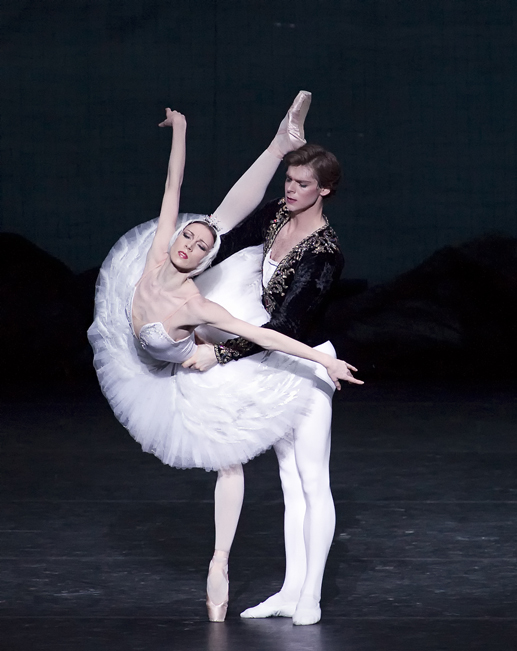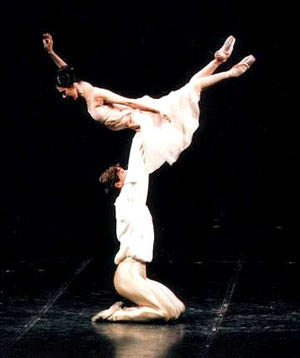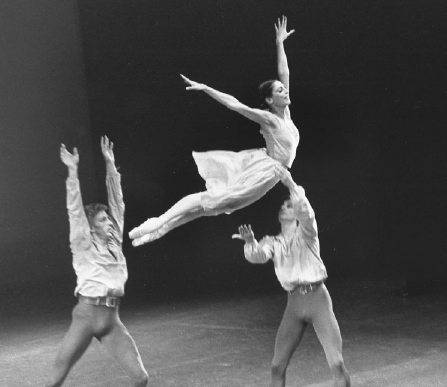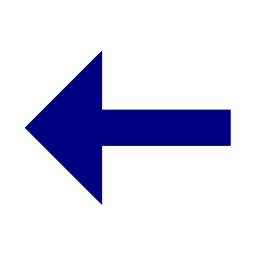Partnering
When two dancers dance together, they open up
many more options for movement. In general,
the woman is for imagery and the man is the
muscle, his job being to make the woman look
good. This is done in many ways through
assisted balances, assisted turns, and lifts.
The
same general physics concepts apply to
partnered moves, but their sources may differ.
For example, a woman is able to balance in a
much wider range of positions when she has a
partner to assist her. As shown is the picture
to the right, the woman is in a position that
would be very difficult to balance in by
herself. The man can move the woman's center
of mass to keep it directly over her contact
point with the floor so that she can achieve
more difficult positions.
|

http://www.berkeleyside.com/2012/10/12/swan-lake-review-needs-to-go-friday/
|

http://operachic.typepad.com/opera_chic/2007/03/ |
During lifts, the man must not only be able to
keep his center of mass over his contact point
with the ground, but he must be in control of
the woman's center of mass as well. As
mentioned in the section on balance, if both
feet are on the ground, there is a large area
that the center of mass can be situated over.
For this reason, it is common for the man to
have a wide stance during a lift because it
makes it easier to balance. Another tricky
aspect of lifts is finding the best point of
contact between the man and the woman. Hand
placement is very important in the lift that
is illustrated to the left. If the man's hands
are too far towards the woman's head, she will
fall forward, but if they are too far towards
her feet then she will fall back. It takes a
lot of practice in each lift for the man to
become familiar with each woman's center of
mass. |

Laws, K. (2002).
 
|